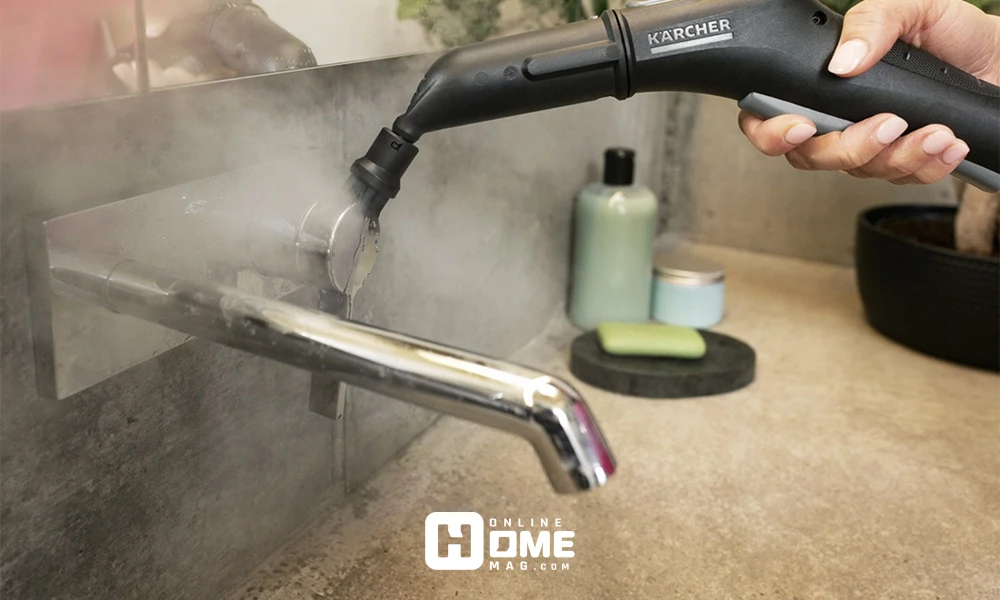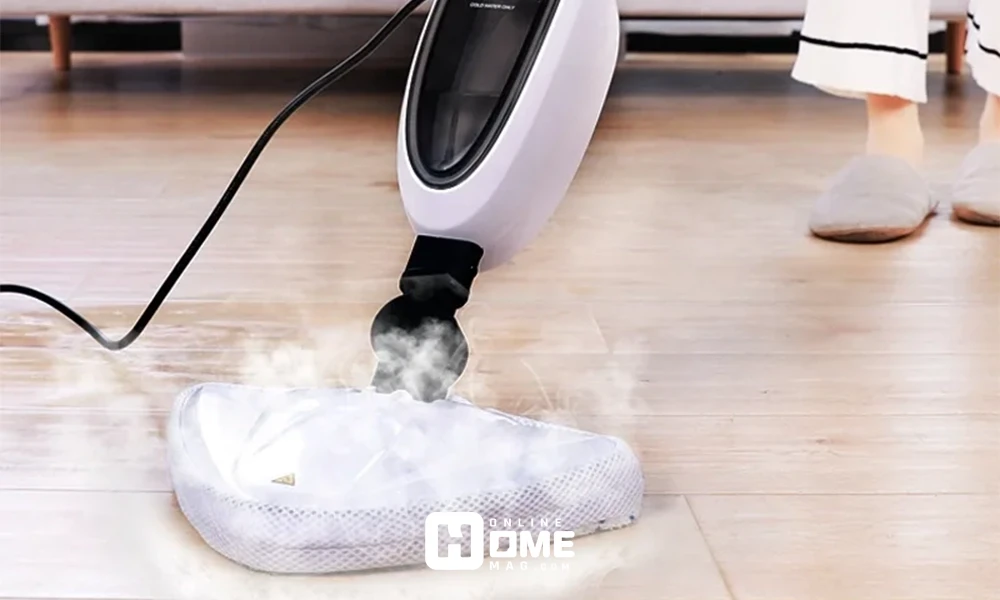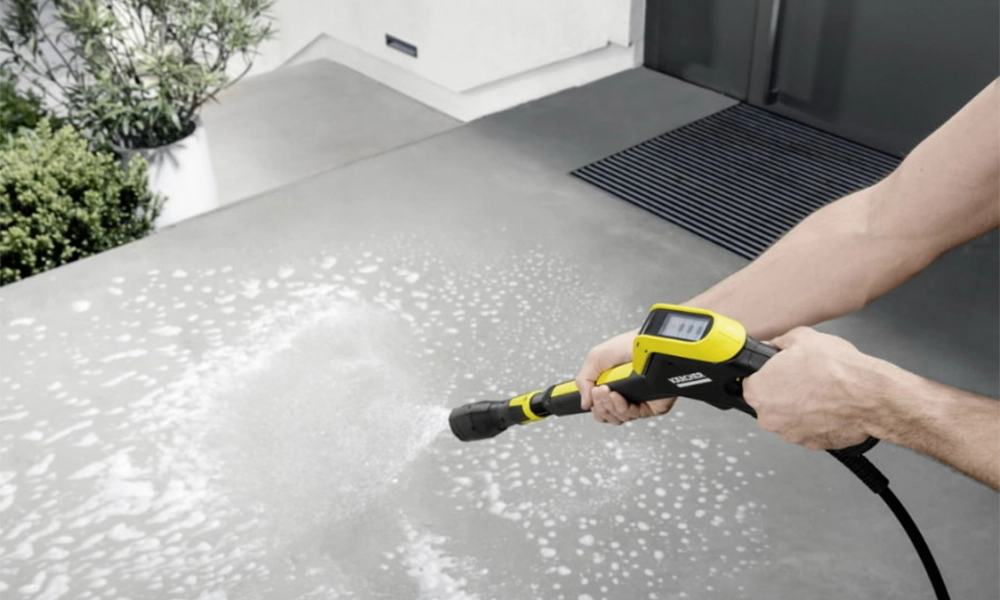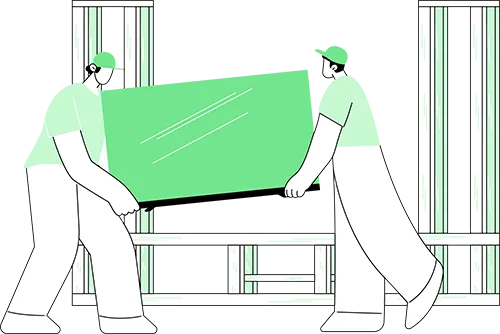🕓 Last updated: October 19, 2025
What is a Steam Cleaner and How Does it Work
Sanitize various surfaces without the need for harsh chemicals. By using high-pressure steam, these devices can penetrate dirt and grime, breaking down stubborn stains, bacteria, and allergens. Steam cleaners are designed to clean a wide range of surfaces such as floors, upholstery, windows, and even kitchen appliances.
The process works by heating water to produce steam, which is then expelled through a nozzle or brush attachment. The high temperature of the steam effectively loosens dirt, grease, and other debris, making it easier to wipe away. The steam also sanitizes surfaces by killing bacteria, viruses, and allergens, providing a deeper clean compared to traditional methods.
For cleaning windows specifically, consider using specialized Window Cleaning Tools to ensure streak-free and sparkling results.

How it works:
- The water is heated inside the steam cleaner to produce steam.
- The steam is then directed at surfaces, breaking down dirt and grime.
- The moisture from the steam is quickly wiped away, leaving a clean and sanitized surface.
how to use a steamer
Using a steam cleaner for home is easy and effective, but it’s important to follow proper guidelines for the best results. Before you begin, make sure your steamer is filled with water and set to the correct temperature. Always read the manufacturer’s instructions to understand specific details about your model.
Steps to use a steamer:
- Fill the steamer with water, ensuring you don’t overfill it.
- Heat the water until the steamer produces steam. Some models will have an indicator light or sound to alert you when it’s ready.
- Start cleaning by directing the steam onto the surface you want to clean. Move the nozzle or brush in smooth, even strokes to cover the entire area.
- Wipe away the loosened dirt or grime with a microfiber cloth or towel for a spotless finish.
Always allow your steamer to cool down before refilling or storing it, and avoid using it on delicate surfaces unless the model is specifically designed for that purpose.
Different Types of Steam Cleaners for Home Use
There are several types of steam cleaners for home use, each designed to meet specific cleaning needs. The choice of model depends on the tasks you need to tackle and the type of surfaces you’ll be cleaning. Here are the most common types:
- Handheld Steam Cleaner: Compact and portable, handheld steamers are perfect for spot cleaning smaller areas like countertops, appliances, and upholstery. They are lightweight and easy to maneuver, making them ideal for quick cleaning tasks.
- Steam Mop: Ideal for cleaning floors, a steam mop is designed to clean hard floors like tile, hardwood, and laminate. It comes with a mop head that disperses steam, making it easy to clean and sanitize large surface areas.
- Canister Steam Cleaner: These models are more powerful and come with multiple attachments. They are versatile and suitable for deep cleaning tasks on a variety of surfaces, including floors, upholstery, and windows.
- Cylinder Steam Cleaner: Similar to canister steam cleaners but typically more powerful, these are great for heavy-duty tasks and are equipped with a larger water tank for extended cleaning sessions.
Each of these steam cleaners serves a different purpose and should be chosen based on your home’s needs.
how to use a steam mop
A steam mop is an essential tool for cleaning hard floors with ease. It works by using steam to lift dirt and grime from your floors, leaving them sanitized without the use of chemicals. Here’s how to use it effectively:
Steps for using a steam mop:
- Fill the water tank with clean water and allow the mop to heat up. Some models come with a ready light to indicate when they’re ready.
- Attach the microfiber mop pad to the bottom of the mop head. This pad will absorb the steam and dirt as you mop.
- Push the mop across the floor in smooth, back-and-forth motions. You can go over tough spots a little longer to ensure dirt is removed.
- Change the mop pad as needed if it gets too dirty or saturated.

Steam mops are effective for tile, laminate, vinyl, and sealed hardwood floors. Always check your floor manufacturer’s care instructions before using a steam mop, as some flooring types may not be steam-safe.
hand held steam cleaner
A handheld steam cleaner is a great tool for spot cleaning in your home. It’s especially useful for tackling small, tough jobs like cleaning kitchen countertops, appliances, and even upholstery. These compact steam cleaners are perfect for reaching into tight spaces and cleaning areas that larger steamers can’t access.
For a comprehensive list of essential tools for every cleaning task, check out our Cleaning Equipment List to make sure you’re fully equipped for any job around the house.
How to use a handheld steam cleaner:
- Fill the water reservoir with clean water and heat it up according to the manufacturer’s instructions.
- Choose the appropriate attachment for the task, such as a nozzle or brush, depending on the surface.
- Direct the steam onto the surface, holding the steam cleaner a few inches away.
- Wipe away debris with a clean microfiber cloth or towel for a sparkling finish.
Handheld steam cleaners are great for quick, targeted cleaning tasks and work well on various surfaces, including countertops, ovens, and fabrics.
How to Choose the Best Steam Cleaner for Your Home
Choosing the best steam cleaner for home depends on several factors, including the type of surfaces you want to clean, the frequency of use, and your specific cleaning needs. A good steam cleaner should be easy to use, powerful enough to tackle tough stains, and versatile for a variety of tasks.
When shopping for a steam cleaner, consider the size and capacity of the water tank, as a larger tank will allow for longer cleaning sessions without needing to refill. Additionally, attachment options are important—ensure the cleaner comes with a variety of tools like nozzles, brushes, and mop heads for different surfaces. The power rating is another key factor, as higher wattage typically means stronger steam and better cleaning efficiency.
Key features to consider when choosing a steam cleaner:
- Water tank size and capacity
- Attachments for various surfaces (mop heads, nozzles, brushes)
- Power rating for stronger steam
- Ease of use and comfort
- Durability and brand reputation
Ultimately, the best steam cleaner for your home should suit your cleaning tasks and be convenient enough to use regularly. A good model will save you time and effort while providing a thorough, chemical-free clean.
Top Benefits of Using a Steam Cleaner for Home Cleaning
Using a steam cleaner for home offers numerous advantages over traditional cleaning methods. One of the main benefits is that it allows for a deep, chemical-free clean. The high temperature of the steam effectively kills bacteria, viruses, and allergens, making it an excellent choice for households with pets, children, or anyone prone to allergies.
Steam cleaners are also incredibly versatile. They can be used on a variety of surfaces, including floors, upholstery, kitchen counters, and even windows. This eliminates the need for multiple cleaning products, saving both time and money.
Another advantage is that steam cleaning is environmentally friendly. By relying solely on water, it reduces the need for harsh chemicals that can damage surfaces and contribute to indoor air pollution. Steam cleaning also eliminates the need for disposable cleaning pads, making it a more sustainable option.
Key benefits of using a steam cleaner:
- Kills bacteria, viruses, and allergens without chemicals
- Suitable for a variety of surfaces (floors, furniture, etc.)
- Saves time and money by replacing multiple cleaners
- Eco-friendly and sustainable, reducing chemical use
- Leaves surfaces sanitized and streak-free
By incorporating a steam cleaner into your cleaning routine, you not only make your home healthier but also streamline your cleaning process. The results are cleaner, safer, and more environmentally conscious.
how to clean sofa with steam cleaner
A steam cleaner for home is an effective tool for cleaning upholstered furniture, including sofas, without the use of harsh chemicals. Steam works by lifting dirt, grime, and stains from fabric, while simultaneously sanitizing and deodorizing the surface. This makes it an excellent choice for cleaning sofas, especially in homes with pets, kids, or anyone sensitive to allergens.
Start by thoroughly vacuuming your sofa to remove dust, crumbs, and debris. Attach the appropriate steam cleaner tool (such as an upholstery brush) to the steam cleaner. Test the steam cleaner on a small, inconspicuous area of the sofa to ensure it doesn’t damage the fabric.
Begin steaming the sofa in sections, working slowly to ensure the steam penetrates the fabric. Use a clean cloth to wipe away any moisture and loosened dirt. For stubborn stains, apply steam directly to the affected area, letting it sit for a few seconds before gently blotting with a cloth.
Key steps to clean your sofa with a steam cleaner:
- Vacuum the sofa to remove loose dirt.
- Attach the upholstery brush to your steam cleaner.
- Test the steam on a small area first.
- Steam the sofa in sections, wiping away excess moisture.
- Use steam directly on stains and blot them away.
Using a steam cleaner on your sofa not only refreshes the fabric but also helps eliminate odors and sanitize the surface, giving your furniture a longer lifespan.
carpet steam cleaner
A carpet steam cleaner is one of the most effective ways to clean and refresh your carpets, especially if they’ve accumulated deep dirt, stains, or allergens. Unlike traditional vacuums, steam cleaners use hot water vapor to break down dirt and grime, lifting it from the carpet fibers and leaving them fresh and sanitized.
To use a steam cleaner for home on your carpets, start by vacuuming the area to remove any loose dirt and debris. This ensures that the steam cleaner can effectively clean the carpet fibers without being clogged by dirt. Once the vacuuming is done, fill the steam cleaner’s tank with water and, if necessary, add a mild carpet cleaner that’s safe for steam use.
Attach the appropriate nozzle for carpets, and begin slowly moving the cleaner over the surface, working in small sections. The steam will lift dirt and stains, and the hot water will help sanitize the carpet. After cleaning, allow the carpet to dry fully before walking on it to prevent dirt from being reintroduced.
Key steps for using a carpet steam cleaner:
- Vacuum the carpet to remove loose dirt.
- Fill the steam cleaner with water and carpet cleaner.
- Use the appropriate attachment for carpets.
- Slowly steam clean the carpet in sections.
- Let the carpet dry completely before use.
A carpet steam cleaner is ideal for deep cleaning, making it a great tool for homes with pets, allergies, or heavy foot traffic.
Common Uses for Steam Cleaners in the Home
A steam cleaner for home is a versatile tool that can be used for a wide variety of cleaning tasks beyond just floors. Its high-temperature steam helps lift dirt, grime, and stains from multiple surfaces, making it ideal for homes with pets, children, or allergy sufferers. Here are some common uses for a steam cleaner in the home:
- Floors: Steam cleaners are excellent for cleaning hard floors like tile, laminate, and hardwood. They effectively remove dirt, grime, and bacteria without the use of harsh chemicals, ensuring a sanitized, streak-free finish.
- Upholstery: Use your steam cleaner to clean sofas, chairs, and other fabric-covered furniture. The steam can lift dirt from fibers, sanitize, and refresh upholstery, eliminating odors in the process.
- Windows and Glass: Steam cleaners with a squeegee attachment work wonders on windows and mirrors. The steam melts away dirt, grime, and fingerprints, leaving a streak-free shine.
Kitchen Appliances: Steam is great for cleaning kitchen appliances like ovens, microwaves, and stovetops. It can break down grease, remove stains, and sanitize surfaces. For a deeper clean, consider using a Steam Cleaner for Oven to tackle tough grease and grime buildup inside your oven.
- Bathroom Cleaning: A steam cleaner is perfect for tackling soap scum, mildew, and hard water deposits in bathrooms. Use it on tiles, grout, sinks, and shower doors for a deep clean.
Common uses for steam cleaners:
- Floor cleaning (tile, laminate, hardwood)
- Upholstery and furniture cleaning
- Window and glass cleaning
- Kitchen appliance cleaning
- Bathroom deep cleaning
By incorporating a steam cleaner into your regular cleaning routine, you can maintain a more hygienic and cleaner home, while reducing your reliance on chemical-based cleaners. To understand the benefits of choosing steam over traditional cleaners, check out Steam Cleaning vs Chemical Cleaning for a detailed comparison.
Common Mistakes to Avoid When Using a Steam Cleaner
While steam cleaners for home are incredibly effective, there are several common mistakes people make that can reduce their efficiency or even damage surfaces. Avoiding these mistakes ensures you get the most out of your steam cleaner and maintain the condition of your home’s surfaces.
One of the most common mistakes is using the steam cleaner on the wrong surfaces. For example, steam can damage certain delicate materials, like unsealed wood floors or silk upholstery. Always check the manufacturer’s recommendations for your steam cleaner and verify if the surface you want to clean is steam-safe. If you’re unsure about using steam on wood, it’s essential to learn How to Clean Wooden Floors safely to avoid any damage.
Another mistake is over-wetting the surfaces. Using too much steam can leave surfaces damp for too long, promoting mold growth or water damage. Always follow the instructions for the correct steam setting and avoid saturating the surface.
Additionally, neglecting regular maintenance of your steam cleaner can lead to poor performance. Ensure that the machine is cleaned after each use, especially the water tank and nozzle, to prevent mineral build-up or clogs.
Common mistakes to avoid:
- Using a steam cleaner on inappropriate surfaces
- Over-wetting surfaces with excess steam
- Failing to maintain the steam cleaner properly
By avoiding these mistakes, you can prolong the lifespan of your steam cleaner and ensure that your cleaning tasks are completed effectively, safely, and efficiently.


